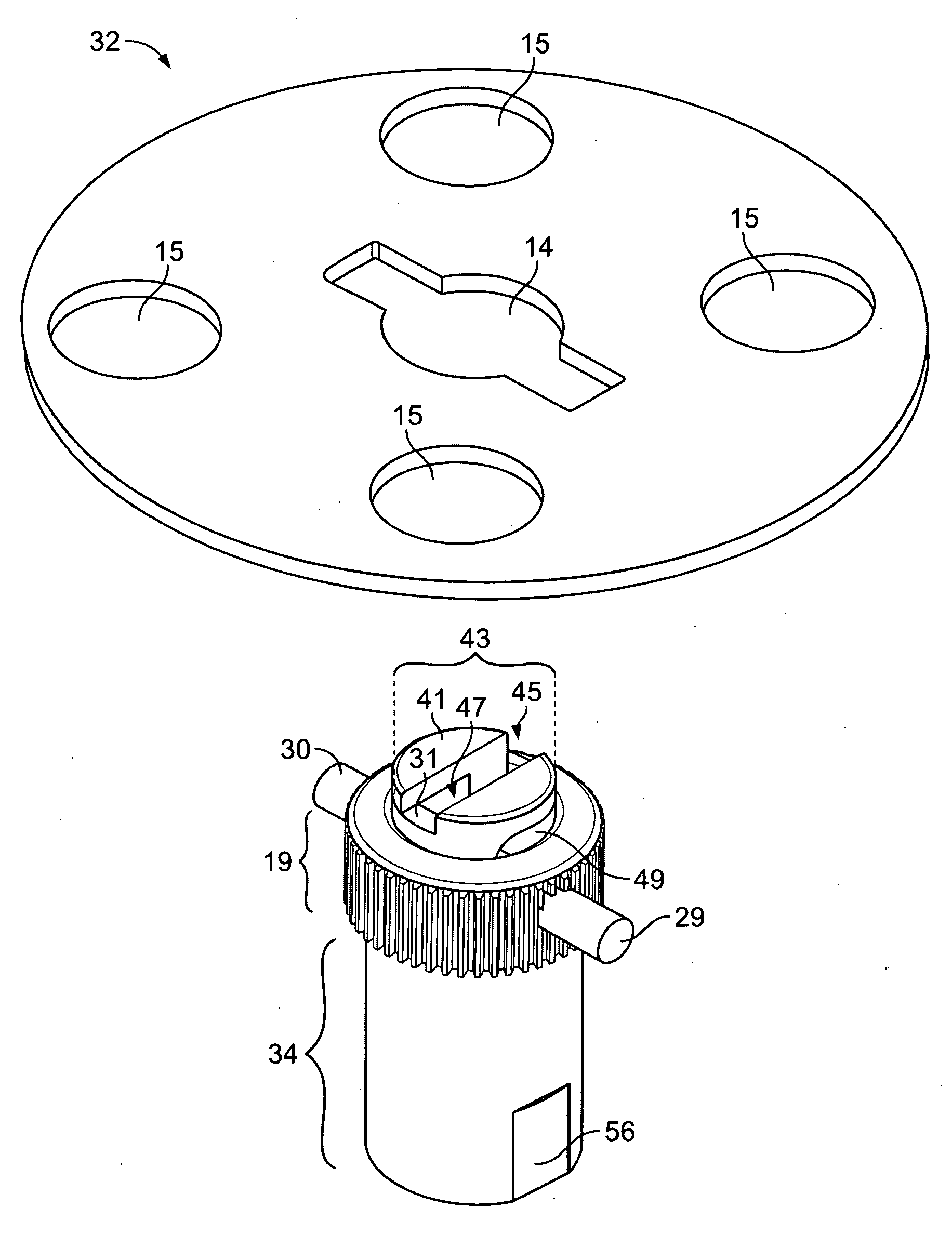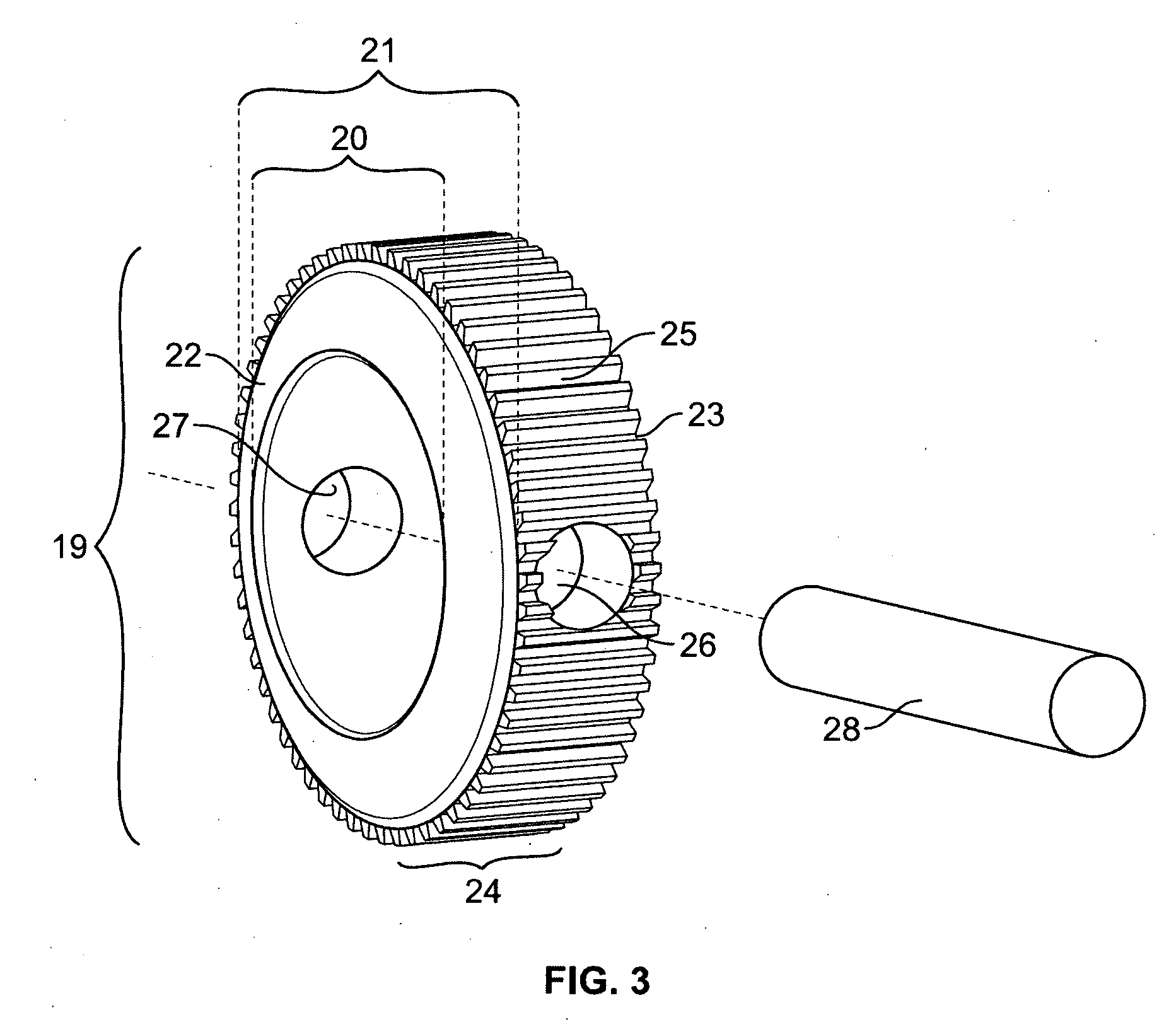The continuous revolutions of either type of buffer causes friction on contact with the surface producing heat, that when combined with a compound alters the surface of the automobile.
If any one of these fail, the results will be less than desirable.
An uneven application of the compound can cause unsightly swirls on the surface that can only be removed by a polisher and not by hand, if at all.
An uneven application or a faulty assembly can cause the
wool pad to
chip away at the surface and cause more damage.
Also, dual-sided pads do not have an exposed backing plate that may contact the automobile surface and cause damage.
A drawback of this approach is that it is
time consuming and cumbersome to change buffing pads during use.
Another drawback is that this approach cannot be used with double-sided buffing pads.
As with the bolt-on method, the hook and loop fastening method cannot be used with double-sided buffing pads.
A drawback of this method is that the high speed rotation of the spindle tends to further tighten the male end of the adapter onto the buffing pad, making it difficult to manually remove the buffing pad from the adapter.
Another drawback is that the plastic plate with the double-sided pad is necessarily disposed of when both sides of the pad are spent, thereby increasing the replacement cost of the buffing pad.
Notwithstanding the advantages of the known quick release mechanism, there are also many practical drawbacks.
Since the connector body is typically formed of a high strength material, such as
metal, the hexagonal shaped head is difficult and hence expensive to manufacture, particularly in comparison to a simple, round head.
Moreover, it is difficult to align the hexagonal connector head onto the corresponding hexagonal socket.
The buffing pad impedes a clear view of the socket and the operator will typically fumble with the device for a while before getting the connector head and socket aligned together.
After continued use, the plastic socket at the center of the backing plate tends to
wear out, providing an even looser fit with the hexagonal shaped head.
If the connector head does not maintain a snug fit with the socket, the buffing pad will wobble during operation.
This causes an undesirable vibration that effects the rotation of the buffing pad, thereby causing poor application of the compound.
The vibration also contributes to operator fatigue, and thereby reduces the productivity of the automotive detailing operation.
This exerts force on the buffing pad assembly that could cause it to inadvertently pop off of the connector during use, potentially resulting in injury to the operator and / or damage to the automobile surface.
To avoid this condition, the operator may be tempted to increase the tension on the internal spring by tightening the adjusting screw in order to thereby achieve a tighter fit; however, this makes it more difficult to use the quick release mechanism to remove the buffing pad when it is spent.
Another drawback with the known quick release mechanism is that the compound used to buff the surface tends to collect in the socket at the center of the plate.
The compound gets into the body of the connector and impedes retraction of the protruding balls.
As a result, it becomes difficult to remove the buffing pad assembly from the connector.
Even under
normal conditions without the presence of compound in the body of the connector, the factory setting of the spring tension applied by the release mechanism can require significant pressure by the operator to overcome and thereby compress the spring.
Yet another drawback of the known quick release mechanism is that the connector body is relatively long in comparison to the traditional adapter due to the inclusion of the release mechanism within the body of the connector.
This relatively longer distance between the buffer and the pad can be disorienting for the operator that is already accustomed to a certain shorter distance.
This tends to further exacerbate operator fatigue and result in an uneven application to the automotive surface.
 Login to View More
Login to View More 









